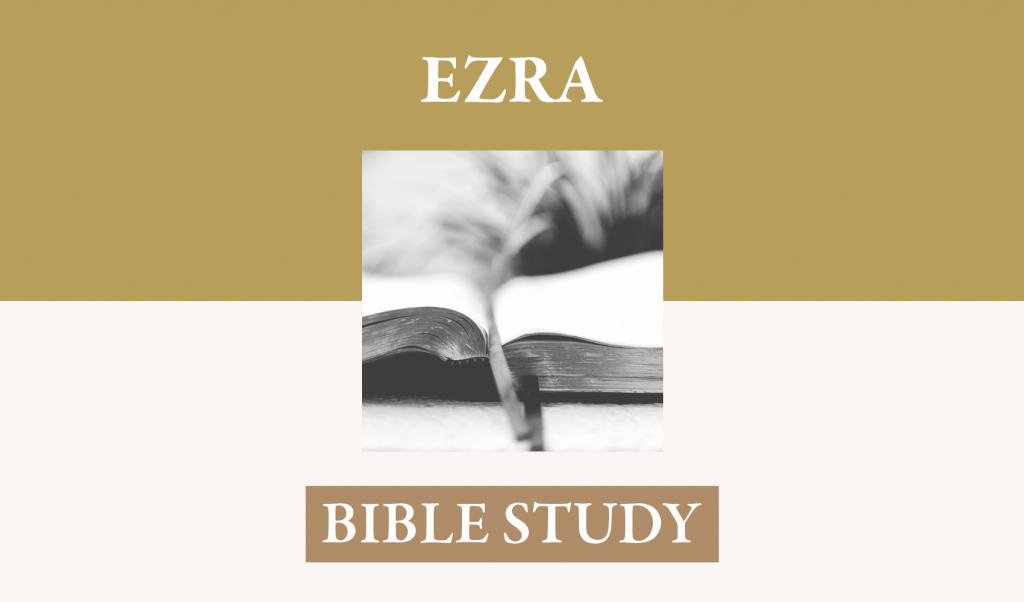and Preparation
for Reformation
Introduction: 2 Chronicles in chapter 36, verses 15 and 16, summarizes the reasons for the captivity of
I. Chapter 1 – Cyrus, having conquered
A. Part of his policy was to allow them to return to their original place of habitation and restore their accustomed worship. The decree issued for the return of the Jews probably was written by Daniel, who served at least until the third year of Cyrus (Daniel 10:1). Daniel probably had shown Cyrus the prophecies in Isaiah about him (Isaiah 44:28 – 45:7). This greatly increased the sense of being a man of destiny for Cyrus.
B. Though Cyrus did not know Jehovah in the relationship of saving faith and an acknowledgement of divine exclusivity, he acknowledged him as an important national deity. Encouraging the Jews in a renewal of their worship practices would only encourage, in the viewpoint of Cyrus, their loyalty to him and their satisfaction under his reign.
C. All the people, “everyone whose spirit God had stirred to go up to rebuild the house of the Lord that is in
D. The vessels that had been part of the temple worship also were restored by Cyrus from the treasury gathered by Nebuchadnezzar.
E. The clear intent of Ezra is to highlight the truth of predictive prophecy, the marvelous correlations of God’s providence in bringing this about, and the present and deeply personal involvement of the Spirit of God in stirring hearts to do exactly as God has decreed.
II. Chapter two – This chapter given the names of families that felt stirred to leave where they had been settled for seventy years in order to return to their promised land. Embedded within this list are the priests and Levites, the singers, some that claimed to be of priestly families but could not provide documentation and others that could not prove they were even of Israelite descent. In all about 50,000 people responded to this first call to return (2:64, 65).
III. The beginning of worship and restoration
A. Those who made this journey were united in re-establishing worship in
B. They were given by God strong leaders both in matters practical and administrative and in religious understanding (2)
C. They were punctilious in following the provisions set forth in the Scripture (2). Their exile had come because they consistently disobeyed or diverged from the revelation of God. The text emphasizes the care with which they sought perfect conformity to Scripture. “As it is written in the law of Moses;” “as it is written . . . according to the rule” (4); “according to the directions of David king of
D. They immediately began to make the required sacrificial offerings (4-6a) As well as following the proper form, these offerings were to remind them of their sin and the need for a perfect, unblemished redemptive sacrifice if forgiveness were to be forthcoming. According to Malachi 1:7ff, the people and priests again soon fell into patterns of mere external display of the ritual without entering into its true meaning.
E. They began making provision for the constructing of the
1. They provided the finances for all the materials needed to construct the temple and made sure that the skilled craftsmen were to be compensated for their work.
2. Those that understood the proper use of the temple and its various sections were made supervisors of the work (8, 9) The two most prominent leaders in this project were Zerubbabel and Joshua the priest. The prophets Haggai and Zechariah encouraged this project. See Haggai 1:12-15 and Zechariah 1:12-16. They point to Joshua and Zechariah as types of Christ and his redemptive work (Haggai 2:20-23; Zechariah 3:1-10; 6:9-15)
3. The re-inhabiting of
F. When the foundations were established, it caused both great joy and great lamentation (10-13)
1. Those who were joyful saw this as a great accomplishment and the beginning of a type of ordered worship that they had never seen.
2. Those who wept might have wept in part because of the restoration of something that had been destroyed and had been taken away because of their sin. Perhaps some of these tears were tears of repentance. Some, for sure, wept because the foundations of this second temple did not project something as glorious as the first temple. “Who is left among you who saw this house in its former glory? How do you see it now? Is it not as nothing in your eyes?” (Haggai 2:3) “For whoever has despised the day of small things shall rejoice, and shall see the plumb line in the hand of Zerubbabel” (Zechariah 4:10)
3. The diminished glory of this earthly temple pointed beyond this to the fulfillment of the temple-type.
First, it points to the surpassing glory of the temple of flesh and blood that was the incarnation of the Son of God (John 2:18-21). It is in this temple that the true sacrifice is offered, that sacrifice that ends all other sacrifices because it finally demolished every ordinance against us (Colossians 1:21, 22; 2:13-15; Hebrews 10:11-14; 13:10-16)
Second it points to the New Covenant people that will compose the eternal place of the abode of God as he is in the midst of his people. (Zechariah 6:12-15; Matthew 24:1, 2; Ephesians 2:17-22)
4. Even as they began to pollute the sacrifices in years to come, so they began to look to the comfort and luxury of their own dwellings rather than finish the construction of the Temple (Haggai 1:2-9) They needed constant prodding-chastening, warnings, and promises—from God’s prophets to finish the work.
IV. After the laying of the foundation some years intervened when the objections from adversaries prompted a stall in the process of building (Ezra 4:4, 5, 23, 24). With the determination of the prophets Haggai and Zechariah along with the practical leadership of Zarubbabel and Joshua the priest, the work continued after a search was made uncovering the original command of Cyrus. Darius, called king (in a loose sense probably), who had been appointed ruler of the territories that included
V. The Celebration of the Passover (6:19-22)– Even as the original Passover was celebrated at the moment of their release from slavery in Egypt, so this Passover marks the release of God’s nation from their exile in Babylon.
A. Again we note how carefully they followed all the revealed processes for the taking of the Passover.
B. They took it with joy, “for the Lord had made them joyful.” True joy comes only in the context of the realization that God has glorified himself in the restoration and safety of his people.
C. Not only had God given them joy, but his divine power had “turned the heart of the king of
VI. Some Observations
A. This apparently small number of people moving back to a desolate, unpromising land of little note in worldly splendor and power set the stage for the redemption of sinners through the Messiah that would come.
B. Even as the events in Esther show God’s providence within Babylon under the Persian dynasty to save his people, so the events in Ezra show God’s providence to use the Persian power to re-establish his people in a context where their identity would be maintained.
C. The decree of God that sets forth his immutable purpose includes necessarily all the means by which that purpose will be accomplished.






















